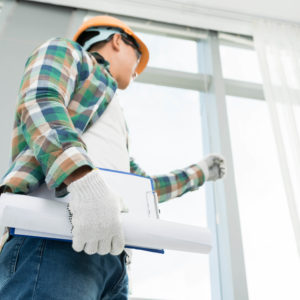 In HVAC, the conversation about energy efficiency never ends. For installers, the challenge is to meet the highest efficiency standards within their customers’ budgets. This means ensuring that every installation includes outdoor components like roof vents and wall caps that protect the building envelope, and, determining whether your customer needs new equipment or a system upgrade. It also means looking at the whole building to identify the causes of poor efficiency.
In HVAC, the conversation about energy efficiency never ends. For installers, the challenge is to meet the highest efficiency standards within their customers’ budgets. This means ensuring that every installation includes outdoor components like roof vents and wall caps that protect the building envelope, and, determining whether your customer needs new equipment or a system upgrade. It also means looking at the whole building to identify the causes of poor efficiency.
According to Rob Faulke’s article, “HVAC Efficiency by Equipment, System Upgrades, or Both?” published by Contracting Business, most contractors want to improve efficiency with an equipment or a distribution system upgrade. But the ideal option is to provide both.
Upgrading equipment can often improve efficiency by 20% to 30%. Many customers compare efficiency gains against their energy costs when trying to decide if they should upgrade. This is a solid approach. Sometimes, says Faulke, they look at other factors such as:
• extended warranties
• special financing opportunities like grants
• environmental issues
• improved indoor air quality
• improved comfort in their homes
When they opt for an equipment upgrade, it’s likely based on the promise of a lifestyle improvement. But, the promise is not always fulfilled. The more efficient the equipment, the pricier it is, and that cost can take a long time to be offset by energy savings. And, if the new equipment is installed in a flawed system, the customer may not get to enjoy any of the promised benefits.
Some contractors focus their attention on improving the HVAC system. This approach can also yield efficiency gains of 20% to 30%. After field-testing the equipment and running diagnostic tests, they will look for ways to improve the system without changing equipment. This will provide a list of customization options to improve efficiency.
This approach has its benefits. Customers pay less than they would for equipment replacement, and since fewer contractors offer this kind of service, there is less competition. Faulkes points out that customers also become more involved in the process and are able to choose upgrades that work within their budgets.
The challenge for the technician, though, is that the diagnostics required for this kind of work calls for specialized tools and training. But Faulke is convinced this is worth it:
“Sales calls will require more from you than pricing a replacement. Additional work and creativity are also needed. Most believe the reward is more than worth it.”
If you upgrade a distribution system that’s running on 15-year-old equipment, will you achieve the kind of efficiency that new equipment provides? The best approach, from Faulke’s perspective, is to replace the equipment and also look at the distribution system. But Faulke’s advice can be taken further.
Take a whole building approach. Your customers can have top-of-the-line equipment and a system that runs perfectly but still be losing heat through their walls, windows, or doors.
As part of your process include a quick inspection of the home. Look for signs of moisture around doors and windows. These are often indicators of a problem with the building envelope.
Find general contractors in your area who specialize in upgrades or rainscreen retrofits. That way you can offer your customers further solutions.
If you have the tools to properly diagnose your customers’ system performance, and provide a summary assessment of the building envelope, you can provide your customers with a clear path to energy efficiency. And they will thank you for it.



